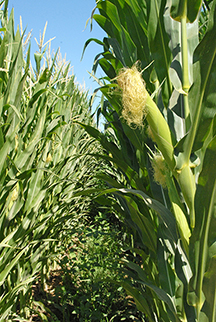 February and March have brought new reminders that nondairy events almost anywhere in the world can affect milk production costs on U.S. farms.
February and March have brought new reminders that nondairy events almost anywhere in the world can affect milk production costs on U.S. farms.The latest examples continue to bring new price volatility to corn, soybeans and wheat.
The distance from the biggest U.S. corn state (Iowa) to Kiev, Ukraine, is about 5,200 miles, and it's about 4,500 miles to the Mato Grosso region of Brazil. And yet, events in those distant places have spooked traders at the Chicago Board of Trade (CBOT) and driven grain prices 20 percent higher in just several weeks.
In January, all three commodities saw their 52-week lows: corn dipped to $4.08 per bushel, soybeans hit $11.63, and wheat touched $5.50. But those are distant memories now; closing CBOT prices two days ago were $4.88, $13.87 and $6.83, respectively.
In February, harvest worries bubbled over in Brazil as the effects of its worst drought in decades became clearer. Then, Russia's apparent takeover of Ukraine added another huge dose of the last thing that futures markets ever want to cope with: uncertainty.
Brazil and Ukraine are two of the worst places to have it at once, because they are two of the world's biggest corn exporters. Brazil is number two and Ukraine is tied for number three. Together they export as much as the U.S. does. Brazil is 10th in wheat exports and second in soybeans. Ukraine is sixth and seventh, respectively.
Earlier this week, the U.S. Department of Agriculture calmed things a bit when it raised the U.S. corn crop forecast by a modest 25 million bushels. However, there are worries that dry conditions in the southern Plains will reduce winter wheat yields that are about to begin harvest.
For the time being, drought and political unrest continue to be much bigger factors in the U.S. grain price outlook, even though they are happening half a world away.
 The author has served large Western dairy readers for the past 36 years and manages Hoard's WEST, a publication written specifically for Western herds. He is a graduate of Cal Poly-San Luis Obispo, majored in journalism and is known as a Western dairying specialist.
The author has served large Western dairy readers for the past 36 years and manages Hoard's WEST, a publication written specifically for Western herds. He is a graduate of Cal Poly-San Luis Obispo, majored in journalism and is known as a Western dairying specialist.








